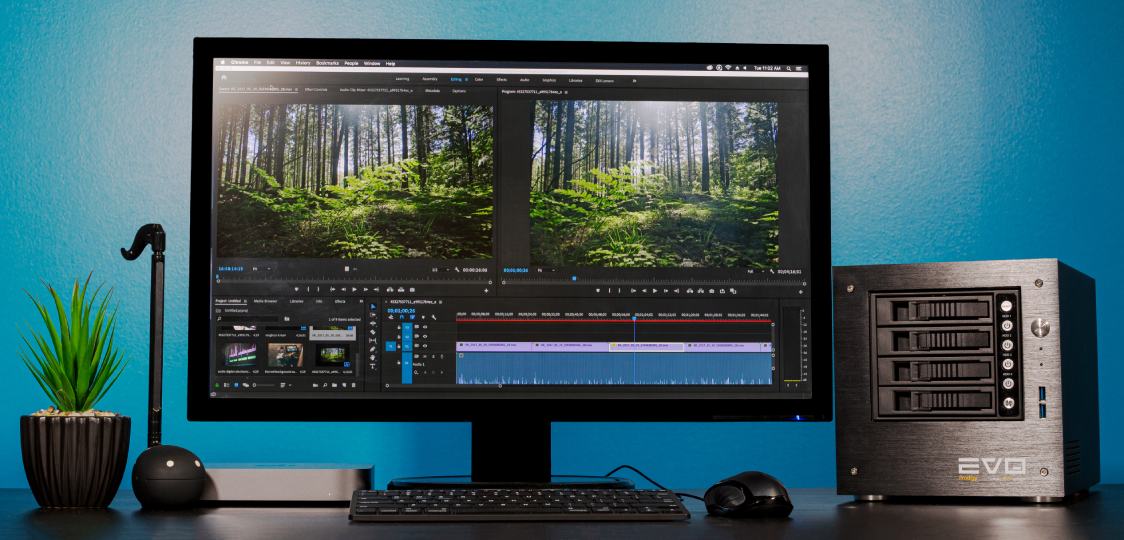
In 2017, a study conducted by the Federal Reserve Bank of St. Louis found that over three percent of the American workforce spends the majority of their time working from home. This percentage is indicative of a speedy upward trend, with only two percent of the workforce working from home in 2011. Technology, as well as industry research, is affecting the way employers think about office environments. The use of web and mobile clients for popular software like Microsoft Office and Slack has opened up possibilities for employees to work from home without missing out on important communication.
The recent coronavirus (COVID-19) outbreak has only increased the demand for workplace connectivity and software options for remote work. Web giants Twitter/X, Google, and Skillshare have opted to send employees home for the time being, allowing them to complete their work away from potential risk of infection. Situations like these are temporary, but firms that are comfortable allowing their employees to work from home during an outbreak might later consider making it a more permanent fixture of their company culture.
Connecting to EVO remotely
So what about post-production? Remote editing is more viable than ever, but it still has its limitations. Gathering footage, particularly on short notice or for an unforeseen amount of time away from work, requires a significant amount of foresight and planning. The file sizes are likely too unwieldy for online transfer, and getting footage from one editor to another would nearly halt the post-production workflow. The good news is that there are options that are already compatible with EVO right now.
One solution is using a VPN server with the EVO post-production server that is already relied upon in the office. VPNs can form an encrypted “tunnel” that allows remote editors to connect to an EVO system, work with project files and proxies, and maintain productivity from home or anywhere else in the world. Connections are encrypted, ensuring that privacy and security are maintained. Once connected, users can access media on a local network as though they were in the same room. You can use nearly any VPN with EVO, but if you don’t already have a remote access solution, SNS Cloud VPN can get your team connected quickly and conveniently.
With VPN access, the only real limitation is the internet connection speed, since the user is free to use their own machine’s resources to communicate directly with other computers in the work environment. They can collaborate using EVO and ShareBrowser, and maintain their usual workflow.
Another solution is use of remote desktop (screen sharing) software, such as TeamViewer, which allows the user to control an office workstation from another computer. This would allow editors to access their files and prepare them for transfer to a home workstation. Having a dedicated computer for this type of sharing will ensure that editors are never without the footage they need while working from home.
These solutions are not without their faults. Anything that relies on an internet connection may introduce issues with latency and connectivity. Some employees might not have the internet speeds required for remote work, hindering their ability to instantly get a remote system going. Either method will likely require some forethought and configuration specific to your workflow.
Check our KB to learn more about using EVO for remote and work-from-home workflows.
SNS Nomad and offline editing
Offline editing is a process in which video editing is performed using low resolution proxy files in place of the original, high resolution source media files. Editing and file handling is much easier with the smaller, lower bandwidth proxy files, yet the final output can retain the quality and resolution of the larger, original source media files.
SNS Nomad is a utility for on the go, work-from-anywhere, remote workflow. It can help you gather and copy source media and proxy files from EVO in preparation for remote/work-from-home offline editing. Read our blog post for more information on the various ways SNS Nomad can help your team with offline editing and working remotely.
Standards for naming and file organization
When collaborating with multiple users in a post production environment, a good workflow is key. One important aspect is asset management and organization. Media Asset Management (MAM) systems such as our own ShareBrowser can help with this by providing search, metadata customization, and other cataloguing features.
These features, and more, combine to provide a structure to assets – in some cases where none exists. At the root level however, all of these assets still exist as files on a filesystem. Standardization on file/folder naming conventions, time/date notation, and more can help organize data in a meaningful, human readable way. There are many conventions that already exist for this. One example of these is from Netflix, who have created a folder & file naming convention for production assets.
This can be especially helpful in remote workflows. Establishing an asset schema for your organization that everyone adheres to will help when managing assets from remote users. The naming & organizational standards will help define what the assets are, and where they belong. This ensures that outside assets can easily be integrated back into a shared workflow, and cataloged by a MAM system with minimal user intervention.
Continuing support and evolving utility
EVO is designed to help editors store media, organize work, and collaborate seamlessly with others. Utilizing VPN or screen share technology with EVO will allow media professionals to keep working hard on their projects with minimum interruption. The most important thing is to find and implement the remote editing method that works best for your company. Remote/distributed workflow isn’t just a growing trend that can be ignored, it’s becoming the new normal. Don’t let current events interrupt the work you do.


